Imagine carefully picking delicious products at a supermarket and paying for them just to leave them at the checkout and go home empty-handed. What sounds like a bizarre, unthinkable situation for retail, quickly became a norm for eLearning businesses.
Up to 85% of online students don’t finish their courses. Although the situation certainly is getting better as new interactive eLearning platforms and tools emerge, online educators still struggle to engage and retain their audience.
Low completion rates harm both online course creators and their students. The former fail to build a devoted audience and must work extra hard to keep attracting new clients. Instead of getting referrals, they have to deal with refund requests, not to mention negative or absent reviews. Meanwhile, students suffer as well — if they don’t reach their learning goals, they don’t develop new skills and thus abandon their ambitions.
Let’s discuss what causes online course dropouts and how to deal with them. We’ll show you multiple ways to make your students complete a course and keep them genuinely interested and involved.
Content:
- Why do online students drop out?
- 15 effective ways to improve online course completion rates
- Analyze what makes your students abandon your course
- Adjust your messaging
- Actively ask for feedback
- Rethink your course curriculum
- Improve and diversify your content
- Share student success stories
- Use engagement features
- Create an online course community
- Do Q&A sessions and live lessons
- Provide personalized feedback
- Use email automation to nurture and communicate with your students
- Acknowledge your students’ progress and reward them
- Improve your course accessibility
- Create urgency
- Keep your ears open
- Motivate your students to complete a course with SendPulse
Why do online students drop out?
Why would anyone abandon an educational product they paid money for? Especially if they already invested some time in it, too. Laziness aside, there are quite a few solid reasons why it can be hard for a student to complete a course, and online educators need to be mindful of them.
- They’re bored. They enroll in the course with certain expectations but quickly realize that they don’t enjoy your teaching style or the way the content is presented.
- They’re too busy. They are looking for a quick way to boost their skills. They simply don’t have enough time to sit through two-hour long lectures or finish complex assignments, even though they’re still interested in your course.
- They don’t get what they came for. They see your clickbait-like ads and get interested in your course. Then, they realize that you don’t deliver on your promises and end up feeling discouraged.
- The course is too hard or too primitive for them. They expect you to help them get out of their comfort zone, one step at a time, but your course doesn’t match their proficiency level.
- They experience technical difficulties viewing your lessons. They genuinely want to learn but keep struggling with your buggy platform or non-responsive videos and, eventually, give up.
- They’re interested, but they lack motivation. They can’t see their progress, talk to their peers, fix their own mistakes, or ask for help, so they keep learning, but at a snail’s pace.
Now, we need to dig deeper and find out how you as an online course creator, coach, or teacher can address and prevent these problems.
15 effective ways to improve online course completion rates
You can incentivize course completion without using any dirty tricks — you’ll just need to make some changes regarding your course content and its delivery. Also, you’ll need to pay attention to how you communicate with your students and what channels you use.
Improving your online course completion rates will bring you more satisfaction from your work, not to mention happier, more active, and generous students. As an added bonus, it’ll help you grow your personal brand and establish a deeper connection with your audience. Make sure to try and combine different methods from this list to see what works best for you.
Analyze what makes your students abandon your course
It’s unlikely that you have all of the aforementioned problems at once — you need to find out what the most popular cause of dropouts for your particular target group is to understand how to handle it.
For example, if your course is for busy parents, you shouldn’t expect them to show up to every live lesson. Instead, you can change your course format and turn some webinars into on-demand, paid-for podcasts they can listen to while driving to work or doing household chores. If you need to show them some visuals, make them easily downloadable so that they won’t have to search for them or take screenshots.
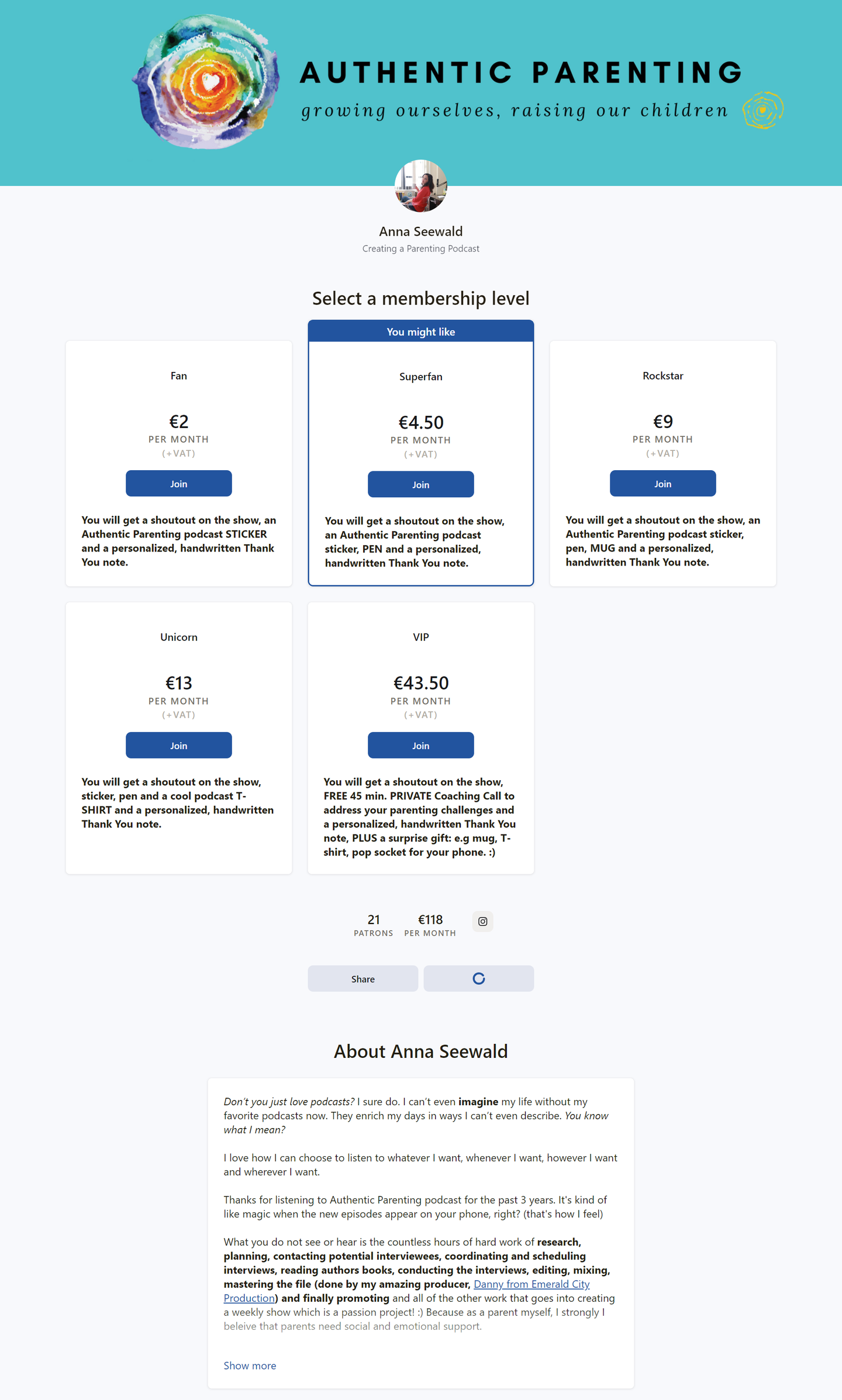
Try to accommodate the needs of your unique audience and be ready to sacrifice the aesthetic of your slides or videos if needed. More than anything else, your lessons have to suit your students’ lifestyle and be informative — that alone can make your completion rate go sky-high.
Adjust your messaging
Do your students always buy what they see? Make sure there are no discrepancies between what you promise in your advertising and what your actual course contains.
Describe tangible results your audience can expect after completing your course and set realistic requirements for your students. What skills do they have to bring with them? Do your classes require any specific preparation or gear? Make sure your students understand what they’re getting themselves into.

Your course advertising doesn’t have to be dull — you still can make it catchy, bright, and exciting by shifting focus to your unique selling proposition. Do you use a brand-new teaching method? Have you learned from the best in your niche? Do you teach a unique technique your competitors don’t know about? Try to convey all of that with your marketing messaging.
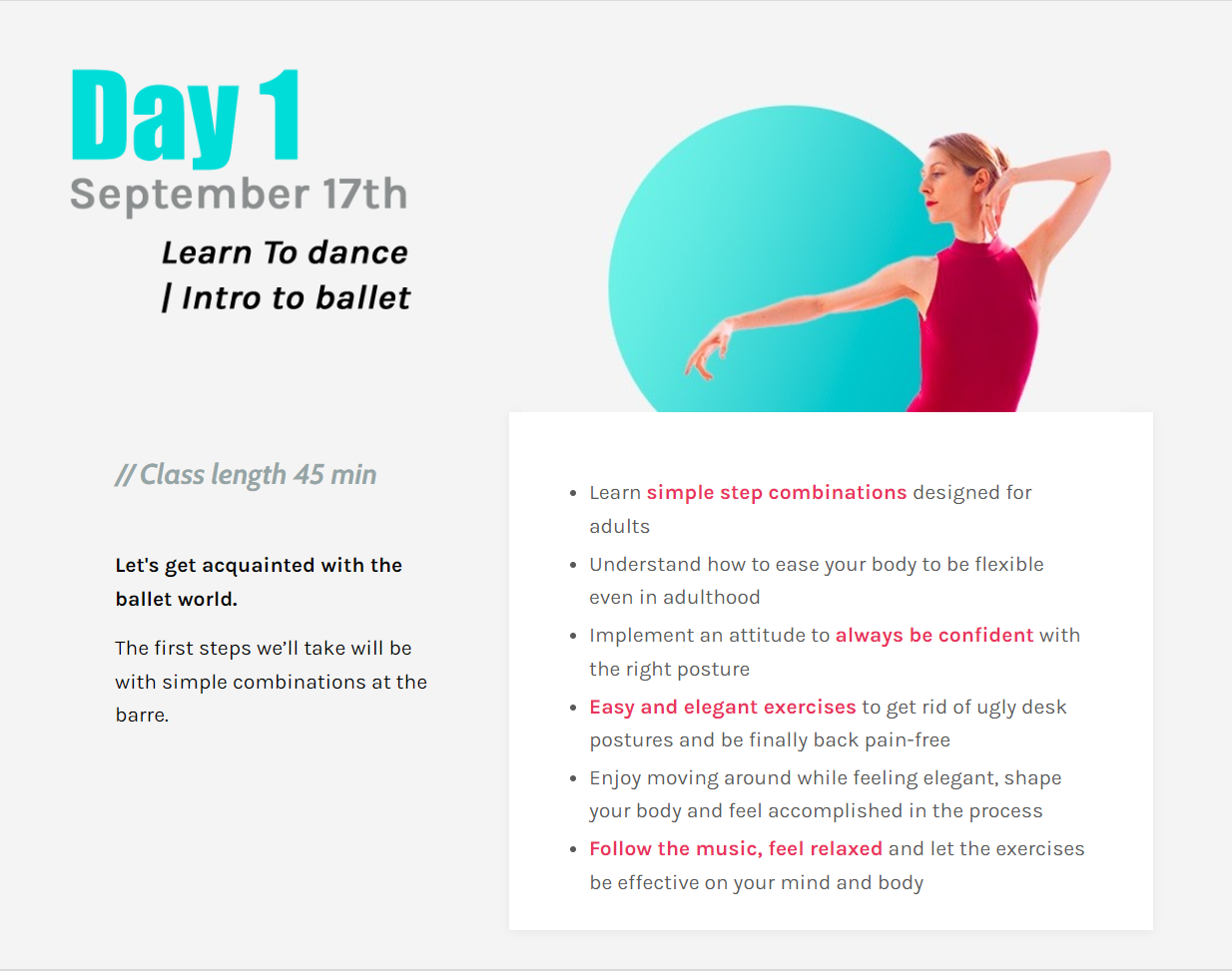
Finally, to make sure that you don’t accidentally misrepresent your course, try to describe its contents as is. It’ll help your students better understand what they’re in for and if it’s a good fit.
Actively ask for feedback
The best way to find out what your educational products are missing is to ask the students themselves. You can collect feedback using gentle survey emails and forms and reward your students for providing you with valuable insights.
With SendPulse, you can design and send personalized survey emails in minutes.

Use our customizable templates to find out what your clients really think of your educational products and how you can improve them. You can set up email automations and send surveys right after your students complete your course to collect the most up-to-date information and suggestions.
Rethink your course curriculum
If you notice that your students progress relatively quickly but tend to drop out after starting a new learning block, your curriculum might be to blame. Follow the “simple to complex” principle when designing your syllabus and try to create a smooth, natural learning experience for your audience.
Assess how your material is currently presented and try different learning models — spiral or mastery — to understand what works better for your subject.

One of the common curriculum design mistakes is leaving gaps between topics or underexplaining the connections between them. On the other hand, you shouldn’t overstretch your course trying to cover every little question possible — it’ll make your lessons unsuitable for fast and eager learners.
Another thing that can harm your completion rates is monotony. Always dilute hours of theory with hands-on exercises, games, and home assignments to keep your students alert and active.
Improve and diversify your content
Try going deeper into the topics your students are interested in and expand your course without rewriting it completely. Include different content formats, downloadable or integrated into your lessons:
- eBooks;
- prompts;
- glossary;
- templates;
- guides to materials and techniques;
- printable shopping lists or recipes;
- step-by-step manuals;
- links to useful resources;
- cheatsheets;
- lists of ideas.
Make your course content more versatile and action-oriented to encourage your students to get their feet wet and start practicing right away.
At the same time, try to trim off less necessary details to shorten your lessons and make them more intensive. If you know that your target audience always has a lot on their plate, you will show them that you respect their time by making your course more digestible, dense, and easy to consume on the go.
Share student success stories
Remind your students from time to time what they’re working toward — it’ll prevent them from giving up on your course when the material gets too complicated. Share your student success stories with them to lift their spirits and motivate them to keep on grinding.
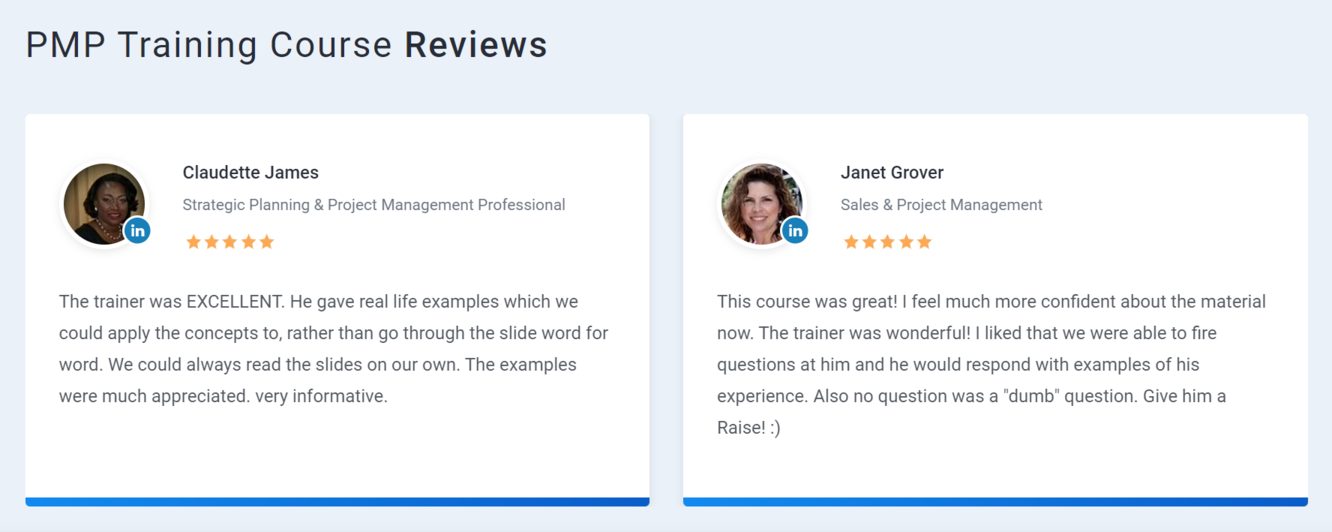
You may even want to ask your loyal former students to record a short video where they tell how completing your course helped them, for example, get a promotion, become better at their hobby, or improve their personal life.
Use engagement features
Make your course more interactive and competitive by creating polls, chats, quizzes, or other intellectual games like Trivial Pursuit to let your learners test their knowledge and communicate in an informal way.
In our online course builder, you can easily create post-chapter tests and place them throughout your course.

Tests help you create healthy pressure on your students and gently push them to refresh the learning material and spend more time mastering their skills. Also, they improve information retention and allow students to turn from passive listeners into active learners.
Create an online course community
If your students feel isolated, they’re less likely to enjoy their learning experience. You can easily prevent student frustration by building a buzzing community around your online school.
Here are just the most prominent benefits of community management for online course creators:
- let your students ask questions and get their assignments reviewed by others;
- allow them to connect with like-minded people who have a similar proficiency level;
- encourage networking;
- boost their trust, loyalty, and interest in your courses;
- help them deepen their knowledge by sharing their experiences, insights, and ideas with others.
You can create a student community using a stand-alone platform like Open Social or Disciple. The alternative is to start a private community on Facebook to test the idea before going all in.
Do Q&A sessions and live lessons
There’s nothing quite like the personal connection between a dedicated teacher and an attentive student. You can recreate that magic by conducting some of your lessons live or offering rapid one-on-one sessions.
The benefits of regularly going face-to-face with your audience are immense:
- You get to see your students’ reactions in real-time, via camera or live chat, and better understand what topics they love and what they struggle with.
- You can answer their burning questions as they arise, maintaining momentum for student learning.
- Your students get a chance to see who you are as a person and develop empathy toward and interest in you.
- You can go into more detail when explaining a new concept to make sure that no one is confused or lagging behind.
- You get an opportunity to make your lessons more conversational and insightful.
Naturally, conducting live lessons is more exhausting and time-consuming, but it’s the only way to bridge the gap between in-person and online learning and keep your students involved.
Provide personalized feedback
Take time to pay attention to each of your students — regularly check their assignments and comment on their work. Try to feel them seen and appreciated, especially if most of your lessons are pre-recorded, and they rarely interact with you directly.
Giving personalized feedback can be as simple as commenting on your students’ Google Docs.
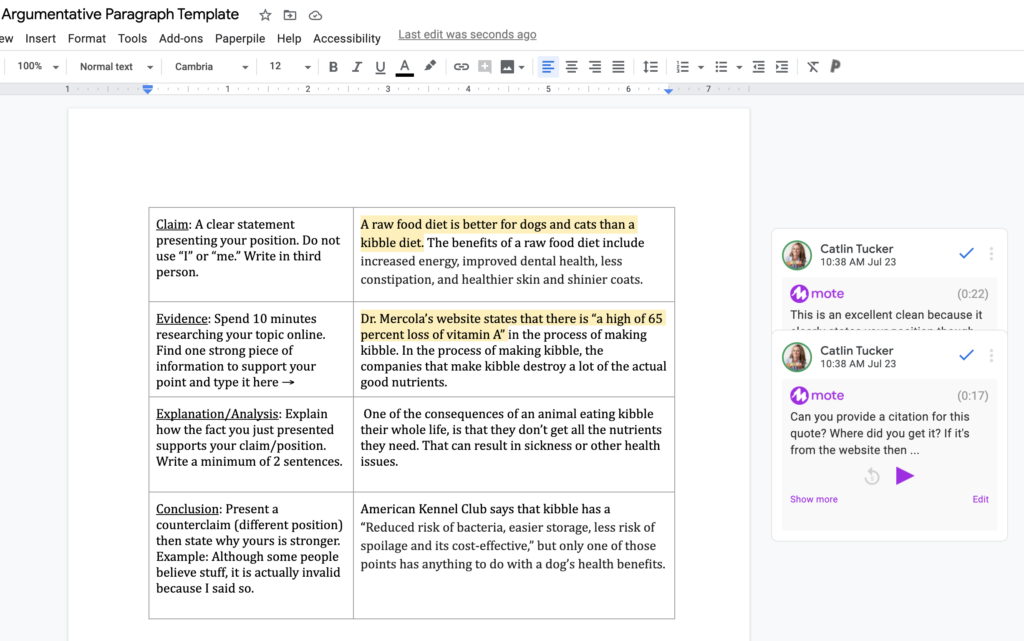
You can even use voice notes to give your feedback a personal touch without spending too much time on a single assignment. Gently point out and correct their mistakes to help them grow and extract more value from the subsequent lessons. Also, let them know what you think of their assignment in general and what they should be focusing on to get better.
Use email automation to nurture and communicate with your students
We already mentioned how important survey emails are, but they’re just the tip of the iceberg. You can use automation platforms like SendPulse to send all sorts of informational and educational messages to your learners. It’ll help you dramatically enrich and deepen your course.
As an online course creator, moderator, or teacher, you can use email to send:
- PDFs;
- lesson recaps;
- eBooks;
- reminders;
- blog posts;
- links to other resources;
- listicles;
- presentations;
- related scientific publications;
- videos;
- announcements;
- guides;
- success stories.
The audience segmentation feature allows you to send tailored messages to different student groups. This way, you’ll maintain a constant conversation without overfeeding them with content.
Acknowledge your students’ progress and reward them
Foster student motivation by allowing them to visualize and track their progress as well as celebrate milestones and major achievements.
With SendPulse, you can not just create online courses but also generate personalized certificates of completion for your students. Make sure to customize them using your brand colors or images.

Some online course platforms also allow for leaderboards and award badges. If yours does, make sure to use that feature as well to make the learning process more competitive and thrilling.
Improve your course accessibility
There are multiple factors that go into making an accessible online course. Ideally, people with slow internet, visual impairments, low-quality speakers, or noisy neighbors should still be able to access its contents. And, of course, it should be available on tablets and smartphones, not just on PC.
The following features can help make your online classes more accessible:
- fast load speed;
- compatible format;
- high video resolution;
- responsiveness;
- subtitles;
- automatic translation;
- course summary;
- easy navigation;
- search function.
Not every online course platform offers you enough accessibility features. If you discover that your target audience can’t properly watch and enjoy your lessons, try moving to a different online course platform to rescue your dying course completion rate.
Create urgency
There’s low completion, and then there’s slow completion, which can be just as harmful to you as an online course creator. In that situation, even though technically you do have students, you can’t actively grow your eLearning business because it takes them forever to earn a certificate.
Passive learners are the ones who don’t participate in your live webinars, are late at submitting their assignments, and so on. You can help your learners overcome procrastination by introducing a more rigid timetable where the most crucial lessons are only available live.
But here’s an even more clever way to speed up course completion. For example, Lingoda offers its students 50% or 100% cashback if they finish Lingoda Sprints on time. The students have to attend all classes and follow all the rules.
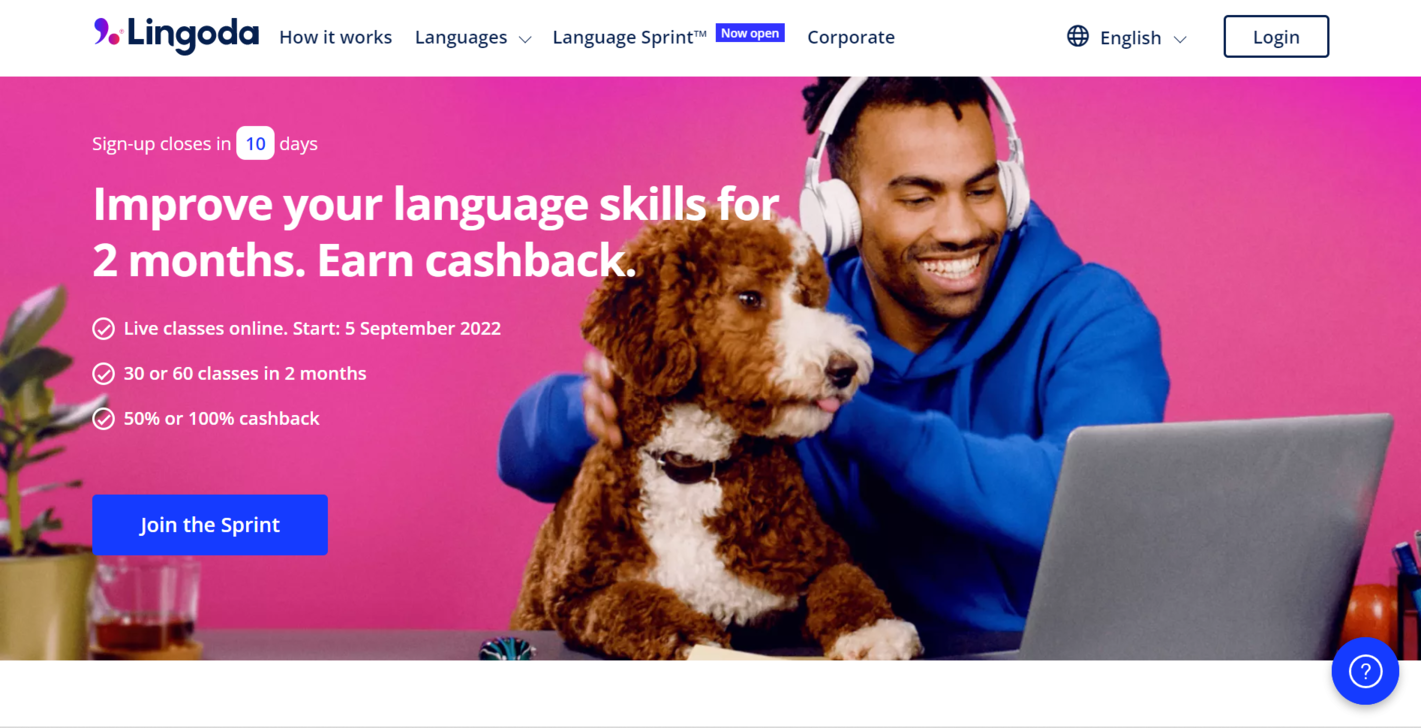
However, Lingoda also sets strict rules to prevent misuse and ensure student presence and attentiveness. For instance, if you miss more than 10 minutes of their class, you lose your chance to get any cashback.
Keep your ears open
Never stop improving your educational products — the world is constantly changing, and so are your students’ needs. For example, when the pandemic hit, many dance studios got hurt, but those who quickly switched to the online format survived and managed to retain their most loyal students.
Pay attention to every subtle cue. For example, if your students keep asking the same questions, like “Where do I find this spreadsheet?” or “How can I watch previous webinars?” then, it’s a sign that you need to improve your course content hierarchy or move to a more intuitive platform. Removing frictions from their learning journey is a guaranteed way to help them complete a course.
Motivate your students to complete a course with SendPulse
Our new online course builder gives you all the tools you need to create engaging online courses without any prior experience in eLearning. You don’t have to code anything — simply turn your existing content assets into professional-looking lessons using our visual editor.
More exciting features are soon to come — sign up for free to access the whole SendPulse toolkit and take your online business to the next level!






![How to Start an Online Course Business [2024 Guide]](https://www.spcdn.org/blog/wp-content/uploads/2024/09/course-business-cover-255x167.png)


